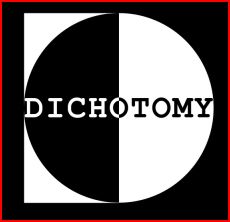| Online: | |
| Visits: | |
| Stories: |

| Story Views | |
| Now: | |
| Last Hour: | |
| Last 24 Hours: | |
| Total: | |
The Dichotomy in Cultural Studies, and also UFO Studies
Monday, November 2, 2015 9:44
% of readers think this story is Fact. Add your two cents.
A back-and-forth between my Facebook friend, academic Bryan Sentes (who teaches at Dawson College in Montreal) and me centered on his insistence that one should focus on artists’ work (in this instance, poets), eschewing, rather much, what I insisted, that one needs to look at the person, in all his or her facets, not just their output.
That is, there should be a gestaltian approach to cultural production: the work and the person creating it.
Bryan thinks the works stand on their own, and that’s true, for a critical stance.
I brought up my interest in cave art, where one cannot know anything, or very much, about who created the great works is such places as Lascaux.
Yes, the drawings/paintings stand alone and have for thousands of years but no one knows why they were created – their purpose – although many anthropologists assert such works were shamanistic.
Wouldn't it be interesting to know who created such magnificent works, and why?
Bryan thinks the output of some poets – Yeats and Eliot for example – is grist for adoration and critical evaluation apart from the sociological or psychological vicissitudes of the poets.
That, for me, is a sloppy way, or lazy way, to comprehend the totality of a cultural artifact, but his arguments are profound and de rigueur in academic circles and amongst most critics it seems.
How does this apply to UFOs?
UFO events are usually (always?) “investigated” singularly, except when clumped together in that ufological cliché, flaps.
Even when a raft of sightings occur in large numbers, over time and locale, “researchers” often pull one or two out of the data or reports and concentrate on the few rather than the many.
Metadata hasn’t impacted “ufology” in any meaningful way, or any way at all, since the heyday of Aime Michel’s “orthoteny.”
But, while a gestalt view of UFOs might produce clues to the phenomenon’s essence, a particular study of one sighting or event, much like Bryan Sentes’ critical approach to cultural phenomena, is valid in ways I’ve supported, suing the Sherlock Holmes’ techniques for solving his mysteries.
But such an approach has proven futile, thus far, as UFOs remain as enigmatic as ever.
So, would a gestalt approach prove fruitful?
Can an accumulation of data – BIG data, as corporations and internet enterprises use it – bring UFOs to heel, that is provide revelations about what UFOs are?
A total package, whether about a creator of cultural artifacts or UFOs, brings truths that a myopic approach doesn’t or can’t.
It is, for me, a question that is open and unanswered: do we find the essence of thing in its parts or in its totality?
I don’t know.
What do you think?
RR
http://ufocon.blogspot.com – The UFO Iconoclast(s)
Source: http://ufocon.blogspot.com/2015/11/the-dichotomy-in-cultural-studies-and.html




